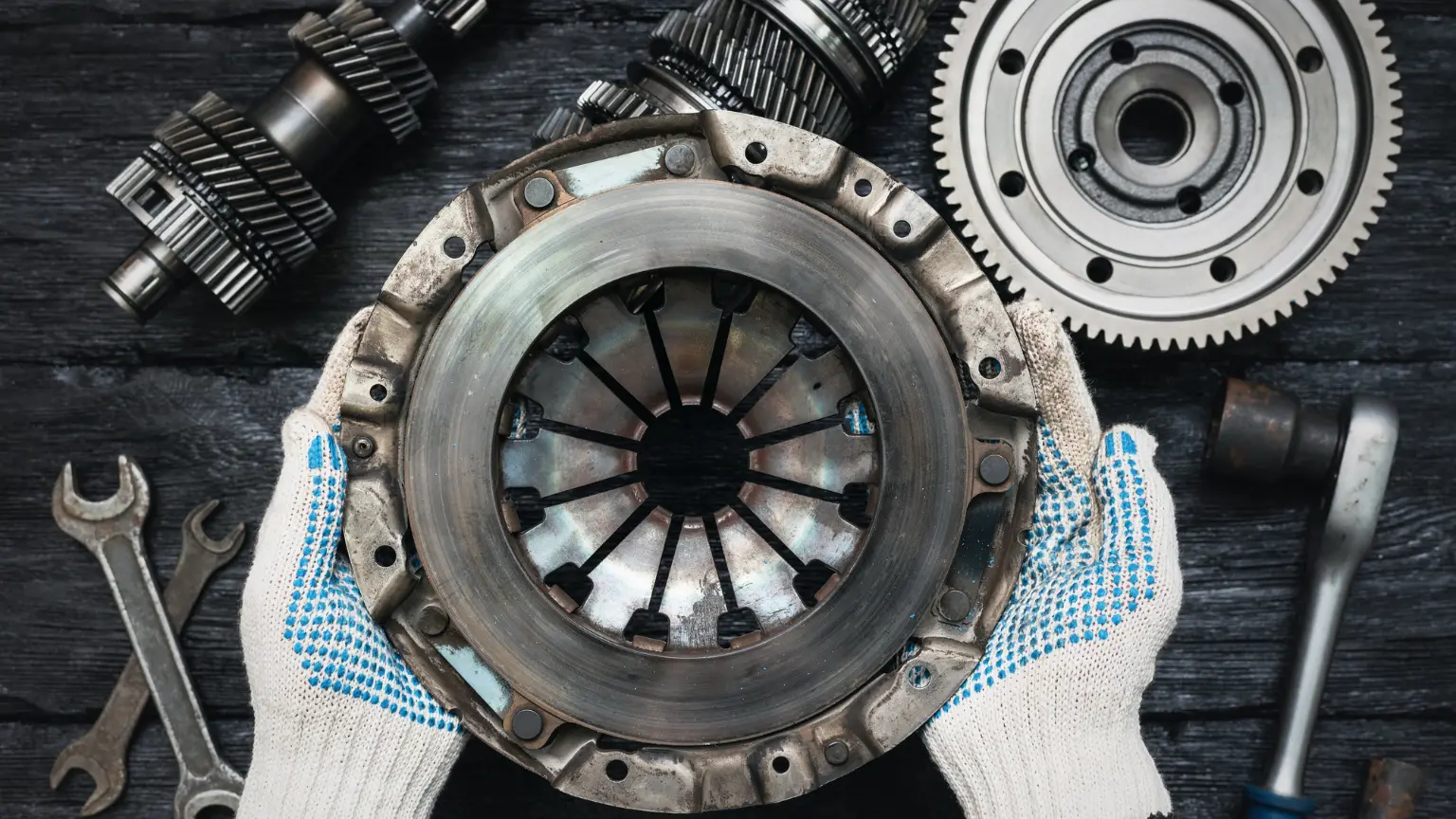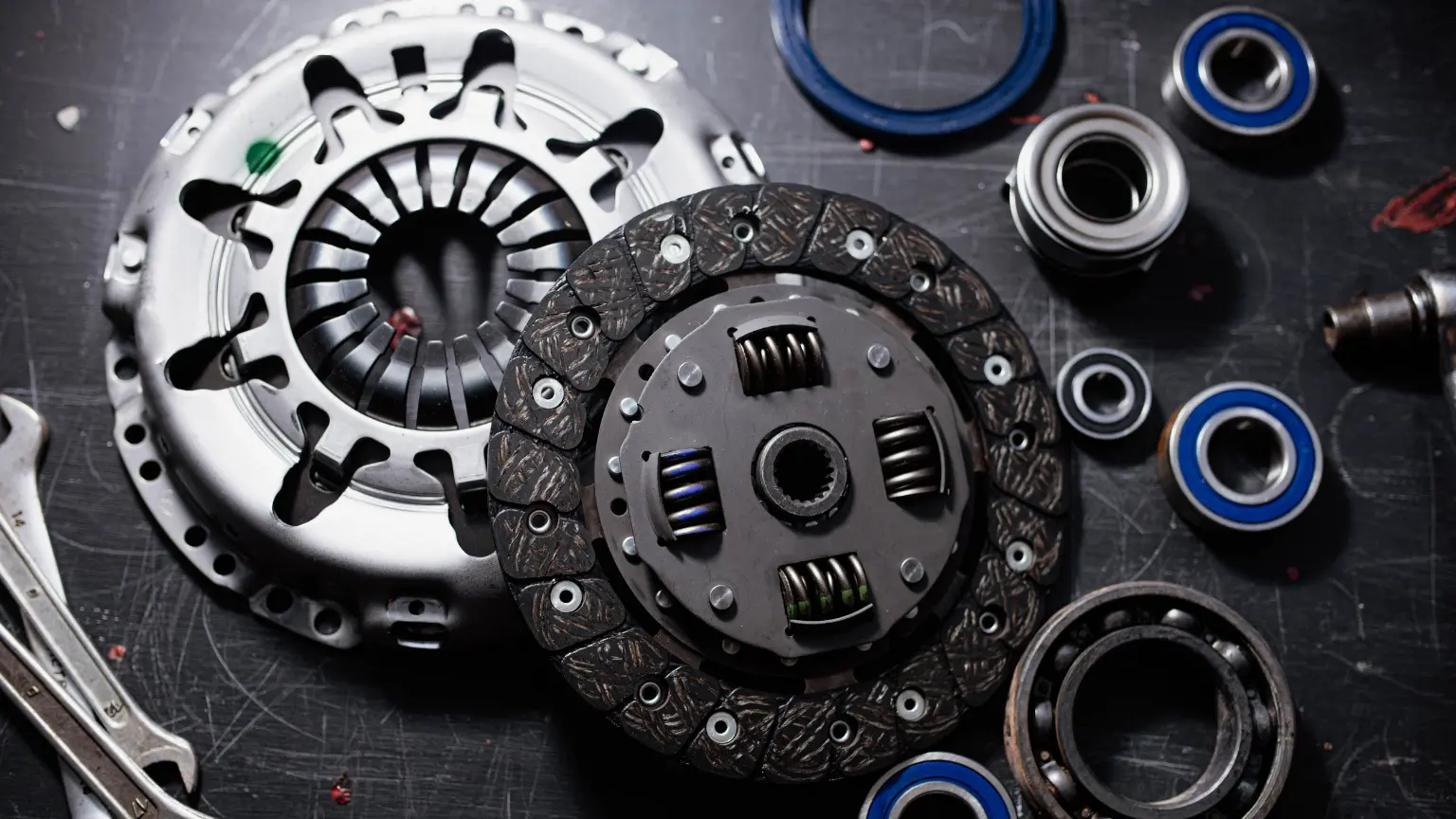Hybrid Car Transmissions: Combining Efficiency and Performance
Hybrid transmissions blend engines & electric motors, managing power via CVTs, power-split, parallel & series systems to optimize efficiency, performance & reduce emissions for modern vehicles.
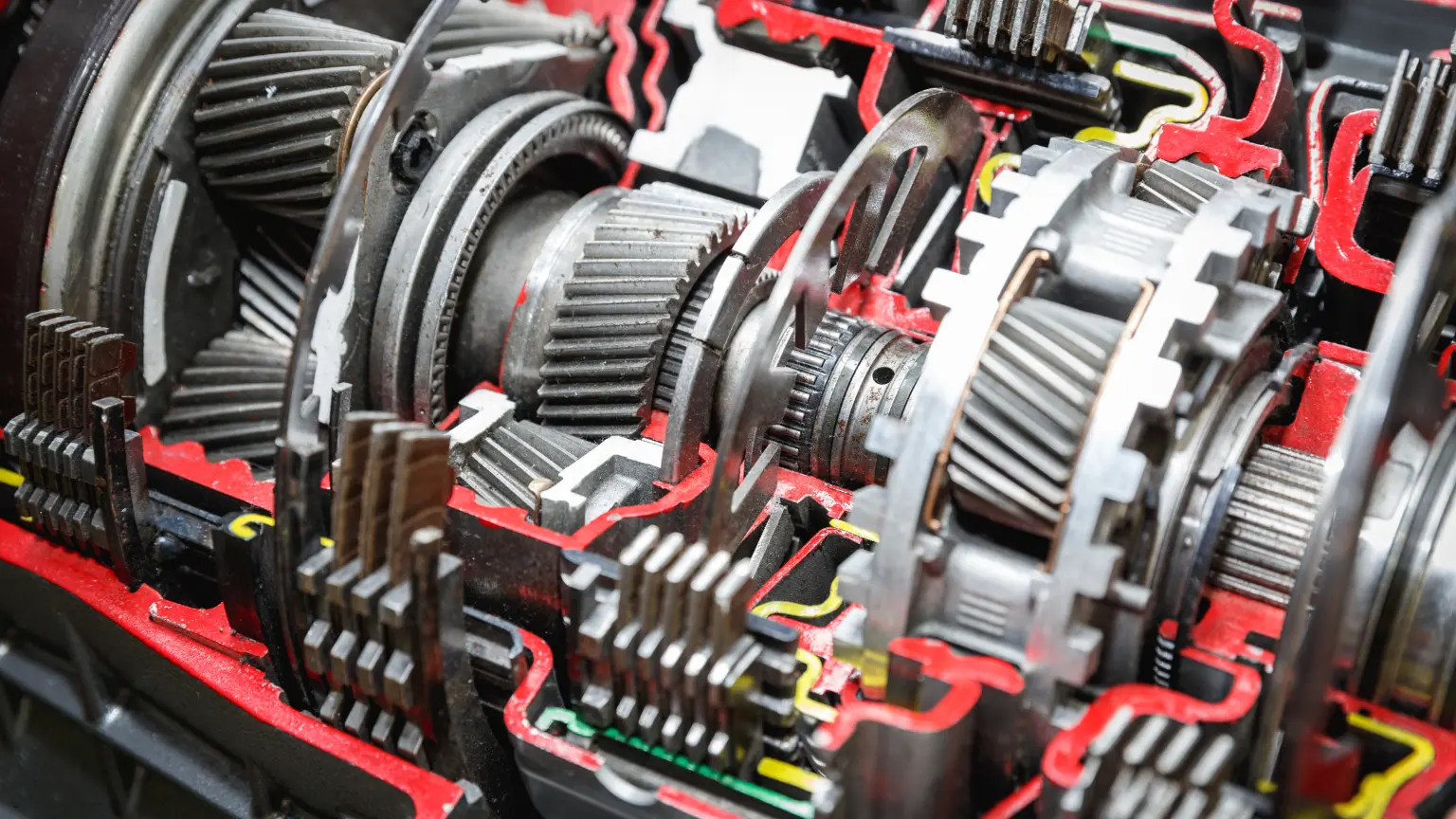
Hybrid vehicles have revolutionized the automotive industry by blending the benefits of internal combustion engines and electric motors. At the core of this innovation lies the hybrid car transmission types, which are designed to manage power from both sources efficiently. Unlike traditional vehicles, hybrids use advanced transmission systems to optimize fuel consumption and enhance the driving experience. This dual-source system not only improves energy efficiency but also supports the environmental goals of reducing emissions.
Types of Hybrid Car Transmissions
Parallel Hybrids
In parallel hybrid systems, the electric motor and the internal combustion engine are connected to the hybrid car gearbox simultaneously, allowing both power sources to drive the car together or independently. This setup is standard in many hybrid vehicles because it effectively utilizes the electric motor at low speeds and the engine at higher speeds. The transmission in a parallel hybrid is crucial to ensuring a smooth transition between power sources and avoiding disruptions to the driving experience.
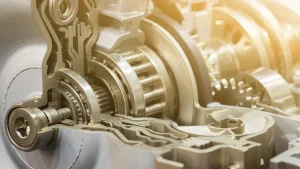
Series Hybrids
Series hybrids operate differently. Here, the internal combustion engine is not directly connected to the wheels. Instead, it primarily serves as a generator to power the electric motor that drives the wheels. This type of hybrid transmission system relies heavily on the electric motor, making it ideal for urban driving where frequent stops are common.
Power-Split Hybrids
These are sophisticated hybrids, featuring a system that combines elements of both series and parallel architectures. They use a hybrid car transmission technology that allows the engine to either drive the wheels directly or generate electricity, depending on the driving conditions. Its efficiency and adaptability to various driving conditions are well-known, and it does so without the driver's intervention.
Hybridization Levels and Variants
The different degrees and categories of hybridization found in vehicles, and how these levels impact vehicle performance and transmission requirements. Hybrid vehicles are not all created equal. There are several distinct levels of hybridization, each with unique characteristics affecting how the car performs and what its transmission must handle. Understanding these categories can help drivers appreciate the technological diversity in today’s hybrid market and make informed choices based on their driving needs and expectations.
- Micro Hybrids: Micro hybrids utilize a start-stop system that shuts off the engine when the vehicle is idling, such as at traffic lights, and restarts it when the accelerator is pressed. While not true hybrids, these systems reduce fuel consumption and emissions in stop-and-go traffic. Transmission requirements remain similar to conventional vehicles, as the electric system does not directly drive the wheels or require specialized hybrid transmissions.
- Mild Hybrids: These incorporate a small electric motor that assists the internal combustion engine during acceleration and can enable limited regenerative braking. However, the vehicle cannot run solely on electric power. The transmission must coordinate brief power boosts from the electric motor, but overall complexity is lower than in full hybrids. Mild hybrid systems modestly improve efficiency and performance without requiring major changes to traditional transmission designs.
- Full Hybrids: It can operate using the internal combustion engine, the electric motor, or both together. This flexibility allows them to drive short distances at low speeds on electric power alone, significantly improving fuel efficiency and reducing emissions. The transmission in full hybrids must seamlessly manage transitions between power sources and often incorporates advanced features like electronic continuously variable transmissions (eCVTs) to handle the wider range of operating modes.
- Dual Hybrids: Dual hybrid systems combine two different energy recovery or hybridization methods, such as pairing electric motors with other energy storage or recovery technologies (e.g., hydraulic or pneumatic systems). These setups can offer enhanced performance and efficiency, particularly in specialized vehicles or high-performance applications. Transmissions in dual hybrids must be robust and adaptable, capable of integrating multiple energy flows and managing complex switching between different propulsion sources.
- Plug-In Hybrids (PHEVs): These feature larger battery packs that can be recharged via an external power source, enabling extended electric-only driving ranges compared to standard hybrids. PHEVs can operate as full electric vehicles for short trips and switch to hybrid mode for longer journeys. Their transmissions must accommodate both high-torque electric operation and traditional engine power, often requiring sophisticated control systems to optimize energy use and maintain smooth performance across all driving scenarios.
By distinguishing between these levels of hybridization, drivers and enthusiasts can better understand how each system’s capabilities and transmission demands align with their preferences—whether it’s maximizing electric driving, improving fuel economy, or achieving a balance of performance and efficiency.
Hybrid Drivetrain Components and Topology
Hybrid drivetrains represent a sophisticated integration of multiple propulsion technologies, each component carefully engineered to maximize efficiency, performance, and versatility. At the heart of every hybrid drivetrain are electric motors, which provide instant torque and enable electric-only operation at low speeds. These motors are typically compact and highly efficient, often positioned in various locations within the vehicle depending on the intended design and performance characteristics. Their placement can range from being mounted directly onto the engine output shaft, integrated within the transmission, or even located at the vehicle’s axle, each configuration offering unique advantages in terms of power delivery and drivetrain efficiency.
A cutting-edge development in hybrid technology is the use of in-wheel motors, where individual electric motors are housed within each wheel hub. This innovative approach eliminates the need for traditional drivetrain components such as drive shafts and differentials, enabling precise control over each wheel independently. In-wheel motors enhance traction and handling, especially in challenging driving conditions, and open up new possibilities for vehicle design by freeing up space within the chassis. However, one trade-off is the increase in unsprung mass, which can affect ride quality and suspension responsiveness. Advances in lightweight materials and refined engineering are helping to mitigate these challenges, making in-wheel motor configurations increasingly viable for both performance and mainstream hybrid vehicles.
The internal combustion engine (ICE) remains a foundational element in most hybrid drivetrains, serving as a primary or supplementary power source. In some configurations, such as series hybrids, the ICE is decoupled from the wheels and acts solely as a generator to recharge the battery or supply power to the electric motor. In parallel or power-split systems, the ICE can work in tandem with electric motors to drive the wheels, with sophisticated control systems orchestrating the seamless transition and blending of power sources. This synergy allows hybrids to operate efficiently across a wide range of driving conditions, maximizing fuel economy and reducing emissions without sacrificing performance.
The overall topology, or arrangement, of these drivetrain components is highly adaptable and varies by manufacturer and model. Common topologies include configurations like P2 (electric motor positioned between the engine and transmission), P3 (motor on the transmission output shaft), P4 (motor at the rear axle), and P5 (in-wheel motors). Each arrangement is chosen to optimize specific vehicle attributes, such as weight distribution, interior space, handling, and energy efficiency. Strategic placement of batteries, motors, and the ICE not only enhances performance but also allows automakers to tailor hybrid systems to meet diverse consumer needs, from urban commuters prioritizing efficiency to enthusiasts seeking dynamic driving experiences. As hybrid technology continues to evolve, the interplay of these components and their topology will remain central to advancing the capabilities and appeal of hybrid vehicles.
Best Hybrid Car Transmissions
Top Models with Advanced Transmission Technology
In the rapidly evolving automotive industry, hybrid cars have carved a niche for themselves by combining advanced technology with environmental sustainability. This list highlights some of the top models equipped with state-of-the-art transmission technology, each distinguished by its unique approach to optimizing hybrid functionality:
- Toyota Prius - The Toyota Prius remains a frontrunner in the hybrid category, primarily due to its power-split continuous variable transmission (CVT). This system allows the vehicle to switch seamlessly between the electric motor and gasoline engine, depending on driving conditions, ensuring top-notch fuel efficiency and reliability. The power-split mechanism helps to maintain a balance between power and efficiency, making the Prius a benchmark in hybrid technology.
- Ford Fusion Hybrid - With its advanced electronic CVT, the Ford Fusion Hybrid excels in urban environments where stop-and-go driving is common. This transmission is finely tuned to provide a smooth transition between power sources, enhancing the driving experience while conserving fuel.
- Honda Accord Hybrid - The Honda Accord Hybrid features a unique two-motor hybrid system that works in tandem with its CVT. This configuration enhances the car's ability to distribute power efficiently across various speeds, ensuring optimal performance and fuel efficiency. The integration of two motors allows for a versatile driving experience, capable of adjusting power outputs for acceleration and cruising, making it an ideal choice for those seeking a sophisticated and eco-friendly vehicle.
- Chevrolet Volt - It stands out with its sophisticated electrically variable transmission that supports an extended electric range before switching to gasoline. This feature makes the Volt particularly attractive for commuters looking to maximize their time running on electric power, therefore reducing fuel consumption. The transmission's capability to handle high electric torque and seamless transition to hybrid mode exemplifies Chevy's innovative approach to hybrid technology.
- Hyundai Ioniq Hybrid - The Hyundai Ioniq Hybrid differentiates itself with a dual-clutch transmission that delivers a more dynamic, engaging driving experience than other hybrids. This system combines the fuel efficiency of a traditional hybrid with the feel of a conventional automatic transmission, providing quicker shifts and a more responsive ride.
Each of these models demonstrates the significant strides being made in transmission technology, proving that hybrids can offer much more than just fuel efficiency. As hybrids continue to evolve, these sophisticated transmission systems play a crucial role in defining the driving experience, blending innovation with practicality to meet the diverse needs of modern drivers.
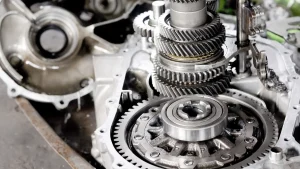
Notable Features and Innovations
They include a range of innovations such as energy recovery systems, advanced battery management, and intelligent power distribution controls. These features ensure that the vehicle operates at peak efficiency, minimizing energy waste and enhancing the overall driving experience. Noteworthy is the development of adaptive shift algorithms that adjust to driving habits, optimizing energy usage based on real-time driving conditions.
How Hybrid Car Transmissions Work
Interplay Between Internal Combustion Engines and Electric Motors
The hybrid car drivetrain is designed to optimize this interaction, allowing for efficient power use and seamless switching between the engine and the electric motor. Depending on the vehicle's speed and load, the transmission automatically adjusts which power source is active, ensuring optimal efficiency and performance. This dynamic coordination is crucial for extending the vehicle’s range while reducing fuel consumption.
Role of Regenerative Braking and Power Transitions
One of the most innovative features of hybrid transmissions is regenerative braking. This system captures energy typically lost during braking and converts it into electrical energy, which is then stored in the battery. This process not only conserves energy but also helps in maintaining the battery charge without external charging. Additionally, hybrid transmission systems are engineered to ensure smooth power transitions between the electric motor and the combustion engine.
Operation Modes of Hybrid Vehicles
Hybrid vehicles are engineered with multiple operational modes: electric-only, internal combustion engine (ICE)-only, and combined power, each tailored to maximize efficiency and performance under varying driving conditions. The hybrid transmission plays a pivotal role in managing these transitions. At low speeds or during light acceleration, the transmission may prioritize electric-only mode for quiet, zero-emission driving. Under heavier loads or higher speeds, it can seamlessly switch to ICE power or blend both sources for optimal output. Advanced transmission systems automatically coordinate these shifts, ensuring smooth, uninterrupted power delivery and enabling hybrids to adapt dynamically to driver demands and road conditions.
Benefits of Hybrid Car Transmissions
Improved Fuel Economy
There are potential benefits of dedicated hybrid transmissions, such as efficiency and performance improvements, as well as future developments and trends in hybrid transmission technology. One of the most compelling advantages of a hybrid car transmission is the significant improvement in fuel economy. These systems are engineered to maximize efficiency by alternating between the electric motor and gasoline engine, depending on the driving conditions. This adaptive use of energy sources typically results in lower fuel consumption compared to traditional gasoline vehicles. As a result, hybrid owners enjoy reduced fuel costs over the lifespan of their vehicles, making hybrids an economically advantageous choice for consumers focused on both environmental and financial savings.
Lower Emissions
Hybrids are pivotal in the automotive industry’s shift toward sustainability, primarily due to their ability to emit fewer pollutants. Hybrid car transmission technology plays a crucial role in this, as it limits the use of the internal combustion engine, which is common in urban driving. By relying more on electric motors, hybrids significantly reduce carbon dioxide and other harmful emissions, contributing to cleaner air and a smaller carbon footprint.
Enhanced Driving Performance
Beyond environmental and economic benefits, hybrid transmissions offer a superior driving experience. The seamless integration of electric and gasoline power sources ensures that hybrids provide smooth acceleration and ample power when needed. Hybrid car drivetrain systems are designed to deliver torque almost instantaneously from the electric motor, which is particularly useful during overtaking maneuvers or when climbing hills. This immediate response not only enhances drivability but also ensures a level of performance that can rival or surpass that of conventional vehicles.
Hybrid Car Gearbox Technology
Continuously Variable Transmissions (CVTs)
Continuously Variable Transmissions (CVTs) are a cornerstone in the evolution of hybrid car gearbox technology. CVTs differ from traditional automatic transmissions by providing an infinite range of gear ratios, allowing the engine to operate at optimal power levels for a variety of driving conditions. This flexibility helps hybrids achieve better fuel efficiency and a smoother ride. CVTs are particularly beneficial in hybrids as they seamlessly adjust to the changing demands between electric and gasoline power, enhancing the vehicle's overall responsiveness and efficiency.
Dual-Clutch Systems
Dual-clutch transmissions (DCTs) represent another innovative aspect of hybrid vehicle transmission. These gearboxes are equipped with two separate clutches for odd and even gear sets, which allows for faster gear shifts and less power loss during transmission changes. The result is a more dynamic driving experience, akin to what drivers might expect from high-performance sports cars.
Hybrid Car Drivetrain Configurations
Impact on Driving Dynamics
Whether it's front-wheel drive, rear-wheel drive, or all-wheel drive, each setup offers different advantages in terms of handling and traction. All-wheel drive hybrids, for example, distribute power to both the front and rear wheels, enhancing stability and grip in adverse conditions. This variability ensures that drivers can choose a hybrid that not only meets their efficiency needs but also fits their driving style and performance preferences.
Efficiency of Different Setups
Front-wheel drive hybrids typically offer better fuel efficiency in city driving due to their lighter weight and simpler mechanics. On the other hand, all-wheel drive systems provide better energy distribution among the wheels, which can be particularly beneficial in hybrids that utilize regenerative braking systems on all four wheels. Understanding these differences is crucial for consumers aiming to maximize their vehicle’s operational efficiency while balancing performance requirements.
Improving Hybrid Car Transmission Performance
Staying Updated with Software Updates
To ensure optimal performance, hybrid owners must keep their vehicle’s software up to date. Manufacturers frequently release updates that can enhance hybrid car transmission technology, including improvements in battery management and power distribution. These updates can also refine how the car's transmission interacts with the engine and electric motor, leading to smoother operations and better fuel efficiency.
Hybrid Car Transmission Maintenance
Regular checks and servicing can prevent minor issues from becoming major problems, especially in complex hybrid systems where the transmission plays a critical role in overall vehicle functionality. Maintenance tasks such as fluid changes, filter replacements, and system diagnostics are essential to ensure that the transmission continues to operate efficiently and reliably.
Finding a Reputable Transmission Repair Mechanic
Tips for Choosing a Specialist in Hybrid Transmissions
Hybrid transmissions differ significantly from their conventional counterparts, requiring specialized knowledge and tools for proper handling and repair. To ensure your hybrid vehicle receives the best possible care, it's crucial to select a mechanic with specific expertise in hybrid technology. Below are guidelines to help you choose the best specialist:
- Check Certifications: These certifications, typically awarded by recognized automotive institutions, demonstrate the mechanic’s commitment to staying updated with the latest advancements in hybrid systems. Certified mechanics are trained to handle the complex interplay between electrical and mechanical components in hybrids, ensuring they can perform repairs and maintenance with precision.
- Experience with Hybrids: A mechanic with a robust track record of working on hybrids will be more familiar with common issues and unique challenges presented by these cars. Their hands-on experience enables them to diagnose problems accurately and implement solutions effectively, reducing the likelihood of recurring issues and ensuring the longevity of your vehicle’s hybrid transmission.
- Read Reviews and Testimonials: Utilizing online reviews and testimonials is a great way to assess the reputation and reliability of a mechanic. Feedback from other hybrid owners can give you insights into the mechanic’s expertise and service quality. Pay special attention to reviews that mention how well the mechanic handles hybrid-specific problems, as this can be a strong indicator of their proficiency with these complex systems.
- Ask About Diagnostic Equipment: Advanced diagnostic equipment allows for precise assessments of hybrid systems, enabling accurate identification and rectification of issues. Mechanics who invest in such tools are likely better able to handle the sophisticated technology in hybrids than those who do not.
- Transparency in Service: Opt for a mechanic who communicates clearly about diagnostics, proposed repairs, and pricing. A trustworthy mechanic should be willing to explain the specific issues with your hybrid’s transmission and discuss the necessary repairs in a way that you can understand.
By following these tips, you can find a skilled and reliable specialist equipped to handle the complex needs of your hybrid’s transmission, ensuring your vehicle performs optimally and remains in good condition for years to come.
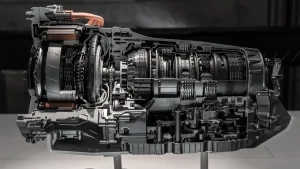
Questions to Ask Your Mechanic
When you visit a hybrid specialist, it’s important to ask the right questions to ensure your vehicle will be properly cared for. Inquire about their familiarity with your specific hybrid model and its transmission system. Ask how often they handle hybrids and what common issues they encounter. It’s also wise to discuss warranty terms on any repairs to understand what is covered and for how long.
The role of hybrid vehicles is increasingly important in our shift towards sustainable transportation. With continuous improvements in hybrid transmission systems and innovations such as AI integration and adaptive management technologies, hybrids are becoming even more efficient and enjoyable to drive. Keep your hybrid running at peak efficiency, and schedule expert hybrid transmission service today at Trans Medic Transmissions. Consumers are encouraged to consider hybrid vehicles not just for their environmental benefits but also for their potential to deliver a high-quality driving experience.
Follow a maintenance program
Ante gravida id aenean quis egestas risus nam amet nullam leo diam diam aliquam eu eu malesuada arcu rhoncus suspendisse nulla mattis ut amet sagittis in justo egestas.

search for a trusted mechanic
Lorem ipsum dolor sit amet, consectetur adipiscing elit lobortis arcu enim urna adipiscing praesent velit viverra sit semper lorem eu cursus vel hendrerit elementum morbi curabitur etiam nibh justo, lorem aliquet donec sed sit mi dignissim at ante massa mattis.
- Neque sodales ut etiam sit amet nisl purus non tellus orci ac auctor
- Adipiscing elit ut aliquam purus sit amet viverra suspendisse potent
- Mauris commodo quis imperdiet massa tincidunt nunc pulvinar
- Excepteur sint occaecat cupidatat non proident sunt in culpa qui officia
Check the air pressure in your tires
Vitae congue eu consequat ac felis placerat vestibulum lectus mauris ultrices cursus sit amet dictum sit amet justo donec enim diam porttitor lacus luctus accumsan tortor posuere praesent tristique magna sit amet purus gravida quis blandit turpis.
Review your suspension frequently
At risus viverra adipiscing at in tellus integer feugiat nisl pretium fusce id velit ut tortor sagittis orci a scelerisque purus semper eget at lectus urna duis convallis. porta nibh venenatis cras sed felis eget neque laoreet suspendisse interdum consectetur libero id faucibus nisl donec pretium vulputate sapien nec sagittis aliquam nunc lobortis mattis aliquam faucibus purus in.
- Neque sodales ut etiam sit amet nisl purus non tellus orci ac auctor
- Adipiscing elit ut aliquam purus sit amet viverra suspendisse potent
- Mauris commodo quis imperdiet massa tincidunt nunc pulvinar
- Excepteur sint occaecat cupidatat non proident sunt in culpa qui officia
Service your vehicle as regularly as posible
At risus viverra adipiscing at in tellus integer feugiat nisl pretium fusce id velit ut tortor sagittis orci a scelerisque purus semper eget at lectus urna duis convallis. porta nibh venenatis cras sed felis eget neque laoreet suspendisse interdum consectetur libero id faucibus nisl donec pretium vulputate sapien nec sagittis aliquam nunc lobortis mattis aliquam faucibus purus in.
“Nisi quis eleifend quam adipiscing vitae aliquet bibendum enim facilisis gravida neque velit euismod in pellentesque”
Conclusion
Eget lorem dolor sed viverra ipsum nunc aliquet bibendum felis donec et odio pellentesque diam volutpat commodo sed egestas aliquam sem fringilla ut morbi tincidunt augue interdum velit euismod eu tincidunt tortor aliquam nulla facilisi aenean sed adipiscing diam donec adipiscing ut lectus arcu bibendum at varius vel pharetra nibh venenatis cras sed felis eget.

